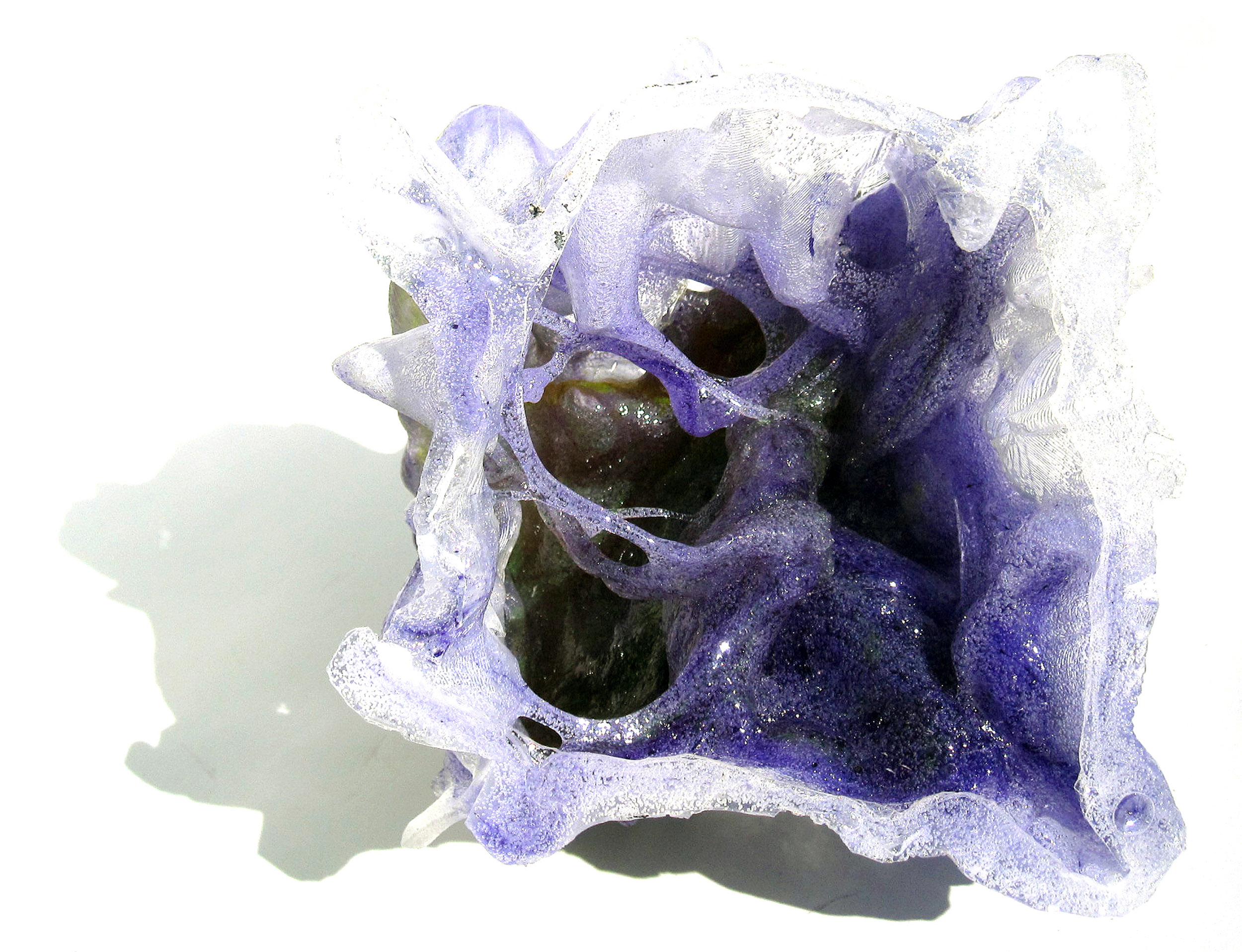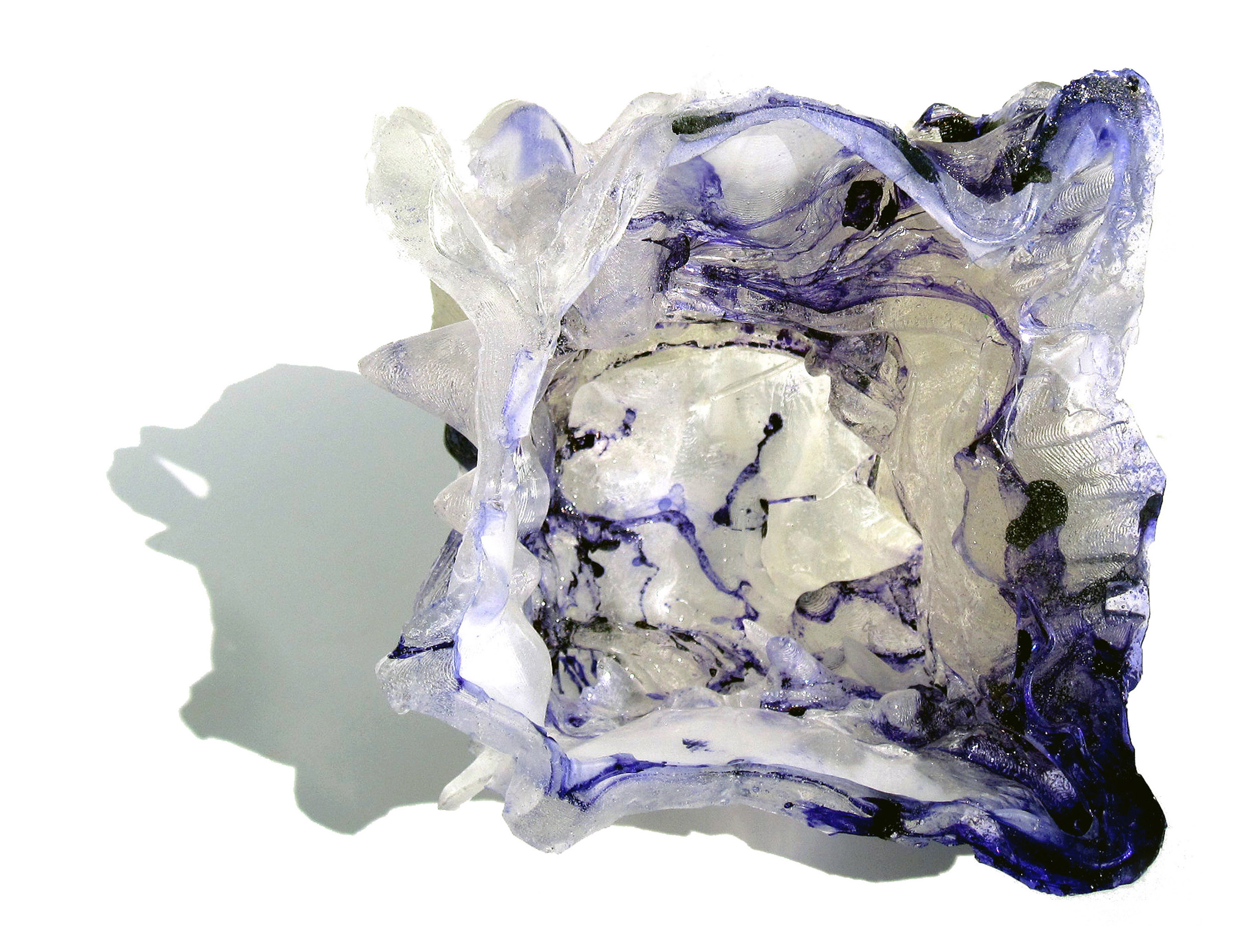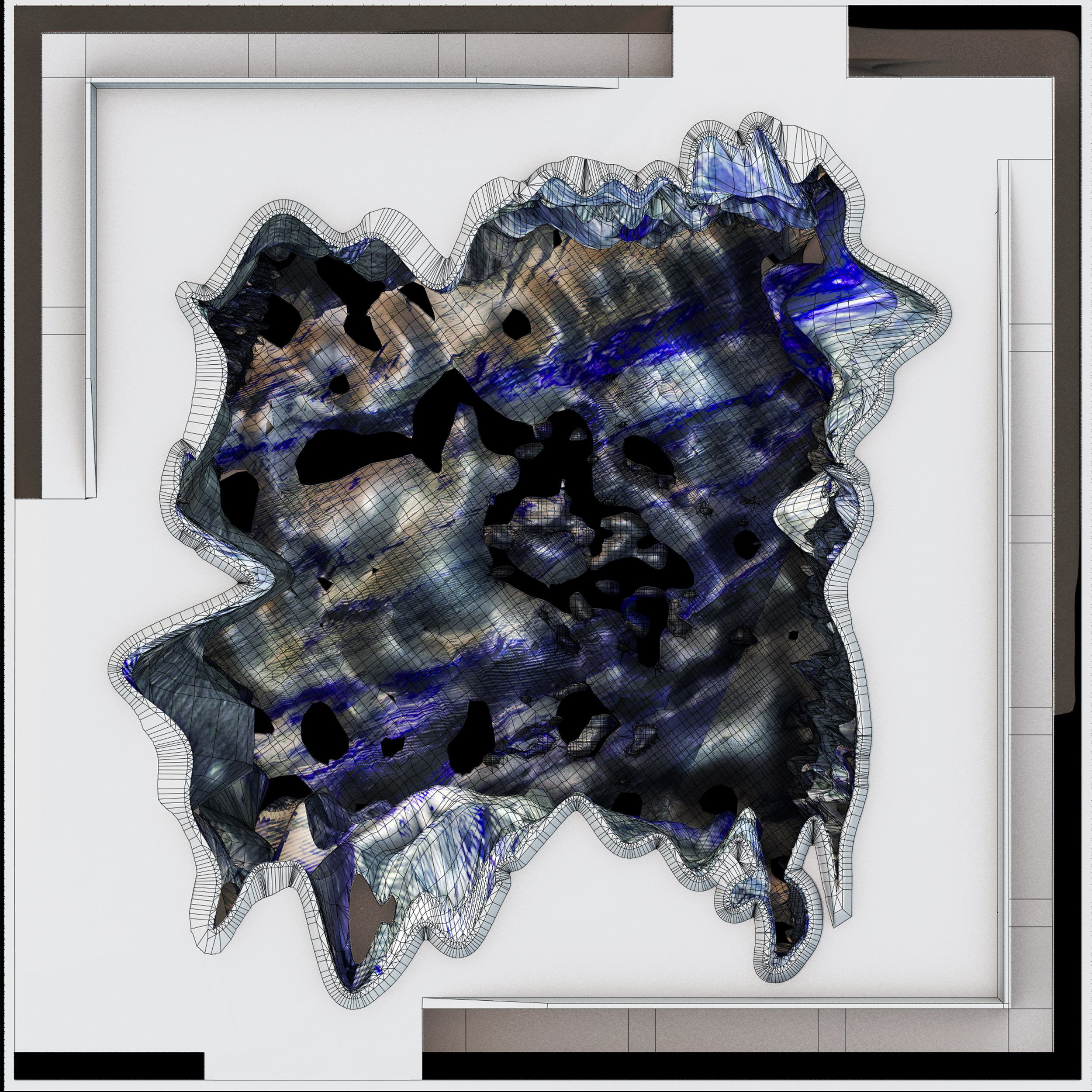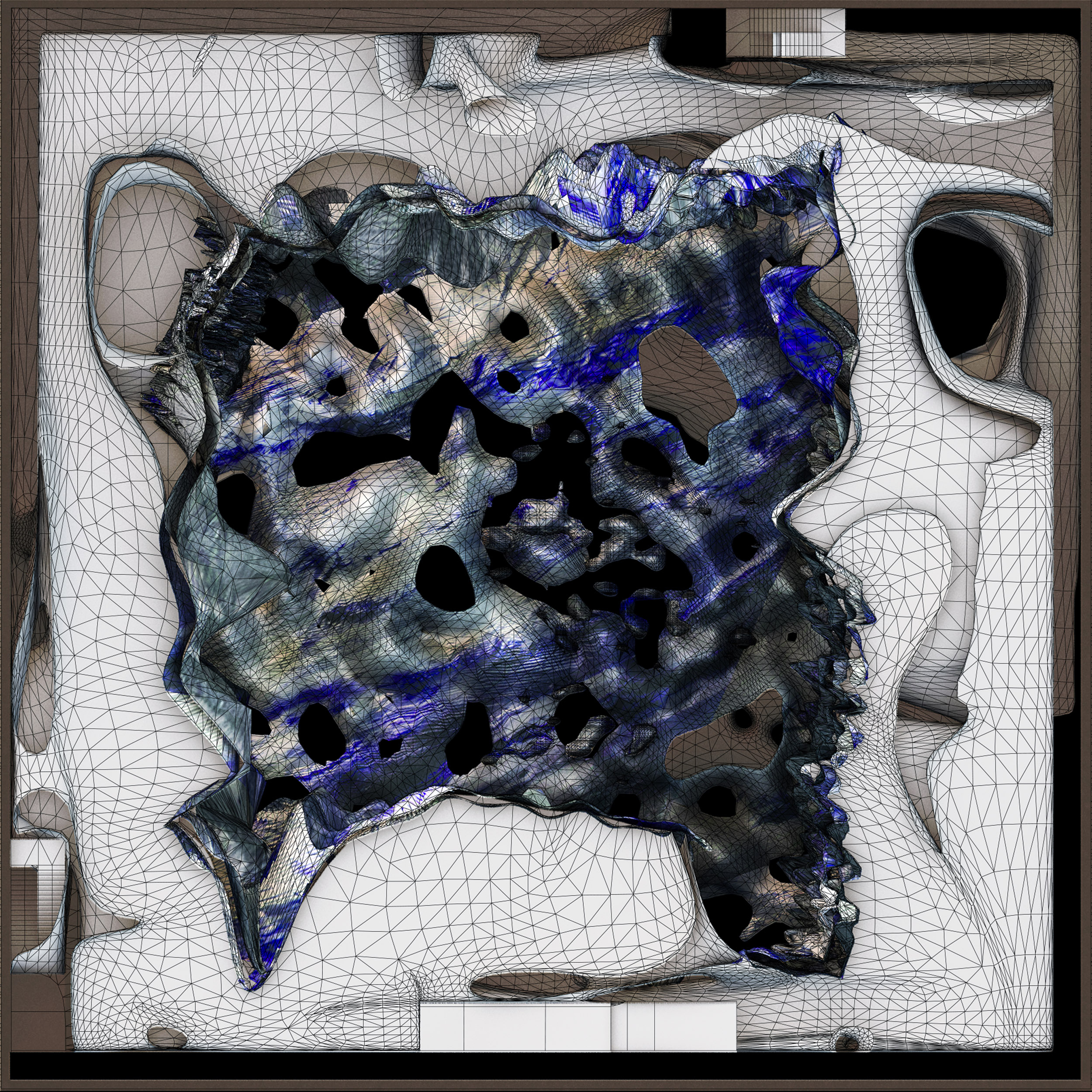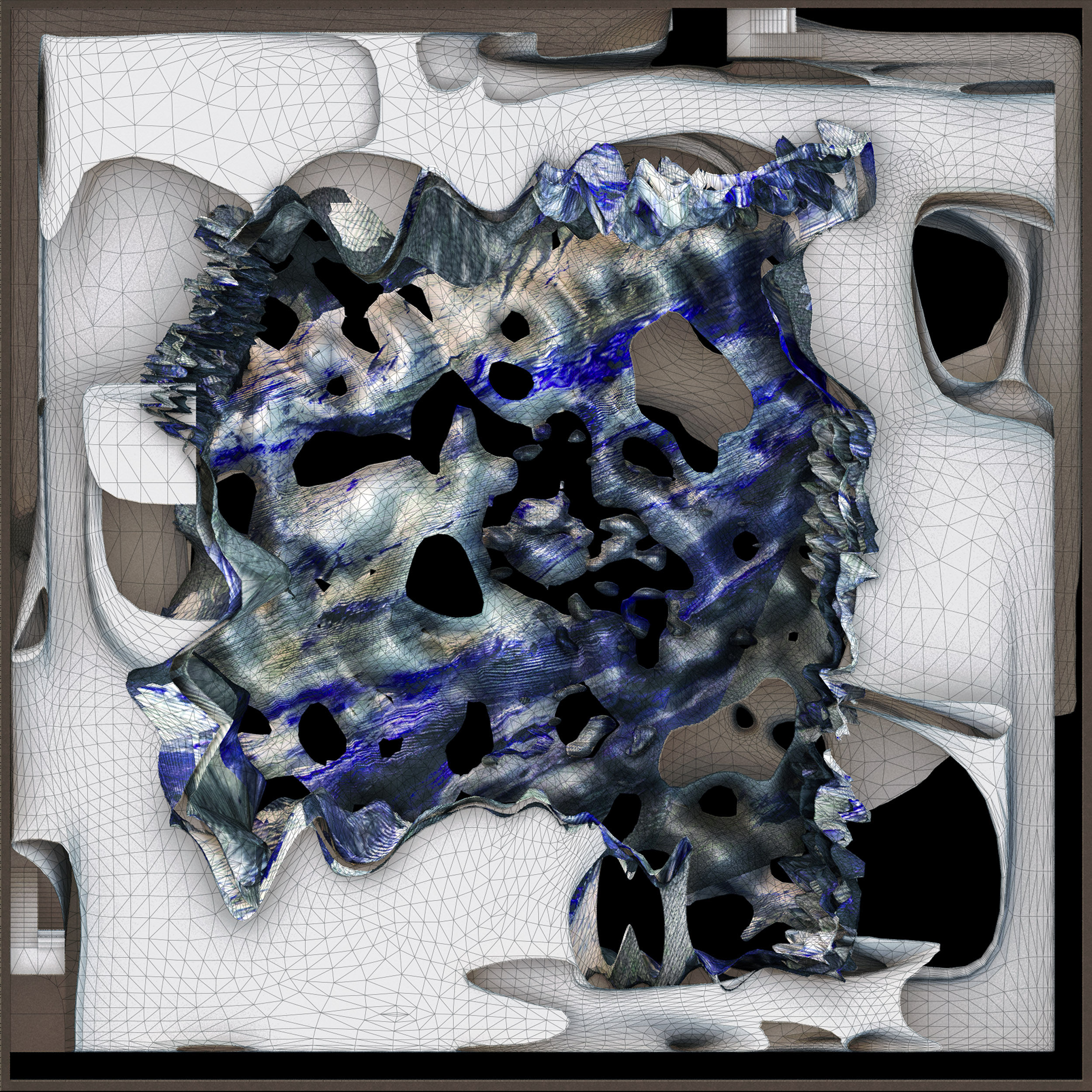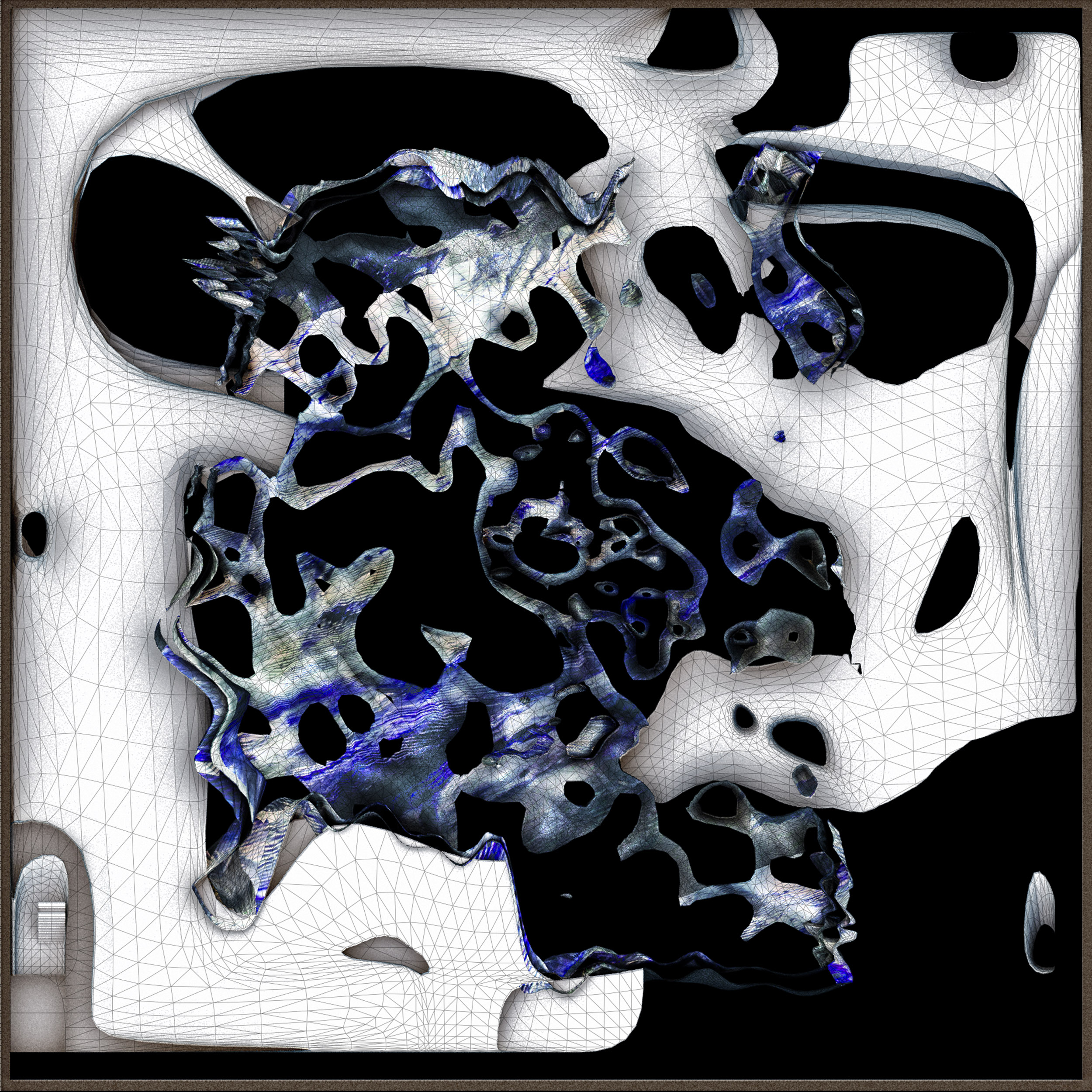rheological translations
Rheological Translations takes cue from the architectural technique of rustication, used to express radical materiality on the facades and surfaces of buildings. The design process adopted resin casting as physical medium for various geometric and robotic operations, leading up to a full-scale architectural proposal for a natural history museum. A rusticated digital geometry was first generated through image height-field operation on an exact primitive geometry (cube). It was then 3d printed and used as a mold for rotational casting of resin.
Video Displaying Robotic Casting
Unrolled Interior Courtyard Elevation Close-Up
We became fascinated with the dichotomy between the inside and the outside of the rotated cast. The outside faithfully reproduced the original 3d printed geometry with its triangulated mesh facets, extrusion layer striations, and matte surface. The inside began to distance itself from the original geometry. the surface became smooth and shiny, full of bubbles and drips, and other unexpected inexact geometries that began to suggest spatial qualities. Six axis robots were implemented to do the rotational casting for motion complexity and repeatability. successful casts were 3d scanned and their geometries and color maps were used to develop a digital model for the museum.
Unrolled Interior Elevation Close-Up
Robotic Apparatus for Rotational Molding
Robotic Apparatus for Rotational Molding
Geometry_Top Images are Meshes of 3D Object and Bottom Images are the Physical Object after Rotational Molding and 3D scan
Interior Photograph of Sample Casted Object
Samples of Robotic Resin Casted Objects
Aerial View of Underground Museum
Plans of Underground Museum
Section of Underground Museum
Unrolled Interior Elevation Close-Up
Unrolled Interior Elevation Close-Up
Unrolled Interior Elevation
Unrolled Interior Courtyard Elevation
SCI-Arc 2014_Instructor_Marcelyn Gow
Partner_Nikita Troufanov







